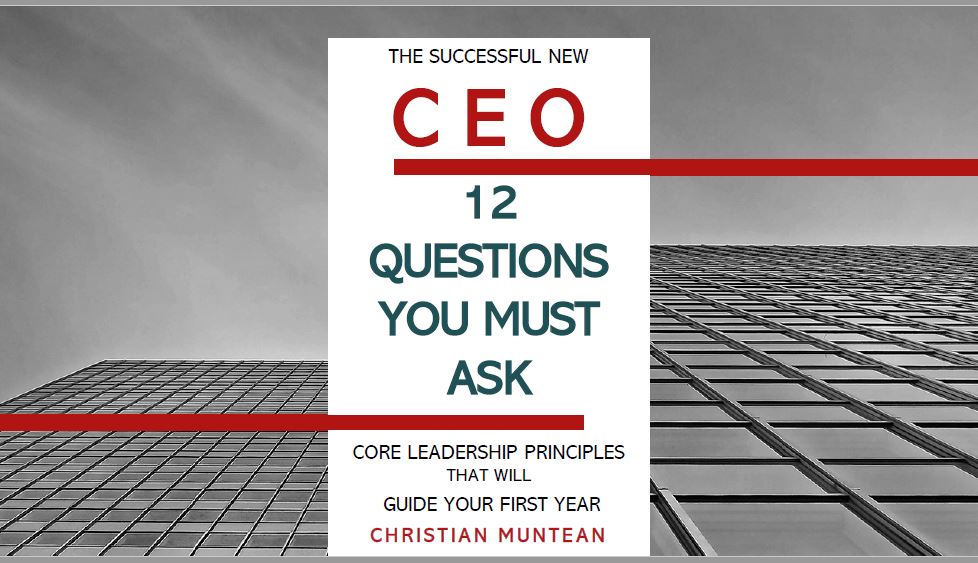7 common ways businesses are a dollar short and a day late – and how to avoid them

Up until recently, we’ve had a beautiful, sunny summer. Unfortunately, we haven’t had rain. Which was much needed.
Then it started to rain. And it wouldn’t stop.
As I was entering my house, I noticed that water was splashing down out of the gutters. Clearly, the downspout was plugged.
Unfortunately, the ideal time to clean out gutters is not during heavy rain. But that is when the problem made itself evident.
Houses are like that. Where I live, it’s important to keep an eye on gutters, roof insulation, sump pumps, and so on. You might be dealing with other issues – termites, raccoons, or what have you.
These are problems that often develop invisibly. And by the time we discover them, they are very inconvenient or costly to fix.
The solution is routine maintenance. Looking over things, even when there isn’t a problem.
Solving Problems Before They Start
Organizations have their own version of this. Many (so many) organizations experience challenges that were preventable and avoidable. Issues that are enormously costly or even, ultimately, sink the ship.
However, because there is distance between the “cause” and the “effect”, most leaders don’t connect the dots. They don’t know what to look for in advance or don’t give those things the attention they deserve.
Here is a short list of the seven most common issues I see:
- Good financial controls/management: Misappropriating funds. Misuse of resources. This happens a lot. Someone’s trusted bookkeeper, who has been with the company for years, was caught skimming. Just today, a board member told me of a director caught renting out organizational resources for personal gain.
It doesn’t even need to be an ethical issue. Many companies bleed resources just due to not controlling costs or not being aware of where their revenue comes from. A CEO recently told me that one line of business was “inconsequential”. When I reviewed their financials, I discovered that line of business accounted for a third of their revenue. That’s consequential.
The prevention: Set up good financial controls and policies regarding the use of assets. Ensure that you or a board is in the habit of asking questions. Become reasonably informed on how to read financial statements.
- Good governance or partnership practices: Boards and partnerships (ownership groups) frequently run into problems due to:
- Ambiguously defined roles, responsibilities, and expectations.
- Poorly designed decision-making processes.
Neither boards nor partnerships are new concepts. People have been doing this forever. Best practices exist. But they are often ignored. They are often not seen as expedient. As a result, problems emerge and they can’t all be solved.
The prevention: Create and regularly review & update roles, responsibilities, and expectations. Take the time to create clear policies (or by-laws or operating agreements) that describe how decisions will be made – especially key decisions. Learn and practice best practices.
- Active business development: Many organizations ride a roller coaster financially. This is often due to backing off on business development (marketing, sales, etc.) when times are good or when it gets busy. Depending on your industry, there is often a time lag between business development activities and when revenues are realized. It is easy for leaders to get so busy doing work that they forget to keep generating new work.
The prevention: Identify the “minimum effective dose” of business development and ensure that this is happening – even during busy times. Either delegate business development activities to someone skilled in that area – or spread them out amongst the team.
- Foreseeing/Adapting to change: Some changes happen to you and around you. Learn to look for and anticipate economic, regulatory, technological, demographic, or market shifts in the customer interests. Too many leaders are too enamored with past success (or challenges) or too busy with today’s work to take the time to see and prepare for what is likely to come. This keeps them in a perpetually reactive mode. Sears, RadioShack, Blockbuster, etc. all refused to read the weather until it was too late.
The prevention: Make sure some of your leaders or advisors are people who naturally look ahead. Engage with publications or local economic or professional organizations that have developed a reputation for effective forecasting. Make a regular (at least annual) practice of taking a look up and out at your environment to identify likely opportunities and challenges.
- Quality /Ethics/Safety policies: Quality, ethics, and safety are arguably areas where the greatest damage to your organization will happen. In spite of this, many organizations (especially if they aren’t regulated or accountable to someone) tend to be very lax about developing or practicing these policies. This oversight is common and commonly produces dramatically negative consequences.
The prevention: Identify the needed policies. Each industry has usually already done this. You rarely need to reinvent the wheel. Define the policies so that they fit your needs. Don’t rely on boilerplate. Clarify wherever there is ambiguity. Apply them consistently. Build a culture of accountability (accountability is modeled from the top).
- Building your bench : The single biggest bottleneck for growth is not having the right management or technical expertise when you need it. These are usually people you can’t just hire on demand. And even if you could, there is often a lengthy onboarding/ramping up process.
The prevention: Based on your strategic goals, model your future organizational and staffing needs. Build and implement an active staff development plan to meet those needs.
- Executive succession planning*: Executive succession planning is often delayed for too long. When it is undertaken, it often underestimates the organizational dynamics associated with succession. As a result, fully two-thirds of executive successions fail for roughly 99% of all organizations. Failure often looks like regret, underperformance, conflict, or a shorter than expected tenure, and not a fantastic explosion. Because of this, most leaders don’t realize the core issue was the succession preparation process. Not the person that was hired.
The prevention: Embrace the concept that succession planning is likely the most strategic move your organization is facing. Take the time to understand, develop, and implement a robust succession plan.
Take the time to review each of these categories and score yourself. Are you doing well in that area? Are you unsure? Is improvement needed?
It’s no good closing the doors after the horse is out of the barn. Don’t let inaction be what takes you down.
Take good care,
Christian
*Read my blog series on succession planning:
- The Most Useful Way to Begin Succession Planning
- Executive Succession Success Tip: Decide What Before Who
- How to Stabilize Your Company for Succession
- The “Make It Easy” Tool for Identifying Your New CEO
- Succession Planning: Often Like Building a Bridge As You Cross It
- How To Do An Executive Search
- How to Onboard A New CEO
Free Leadership Resources
Whether you are a new CEO, thinking of succession or exit, or wanting to strengthen your leadership and your team, I’ve got resources to help:
Enhancing your leadership skills
There are 𝟭𝟮 𝗰𝗿𝗶𝘁𝗶𝗰𝗮𝗹 𝗾𝘂𝗲𝘀𝘁𝗶𝗼𝗻𝘀 to ask before accepting a new CEO position. Do you know what they are? Instantly download my free e-book here.
𝗧𝗵𝗲 𝗕𝗲𝘀𝘁 𝗧𝗶𝗺𝗲 𝘁𝗼 𝗖𝗿𝗲𝗮𝘁𝗲 𝗔𝗻 𝗘𝗺𝗲𝗿𝗴𝗲𝗻𝗰𝘆 𝗦𝘂𝗰𝗰𝗲𝘀𝘀𝗶𝗼𝗻 𝗣𝗹𝗮𝗻 𝗶𝘀 𝘽𝙚𝙛𝙤𝙧𝙚 𝗬𝗼𝘂 𝗡𝗲𝗲𝗱 𝗜𝘁.
Be prepared for a smooth transition in the event of an unplanned emergency succession. My guide will show you step-by-step how to devise your own plan.
Are you interested in learning more about becoming a successful CEO? If so, get a free copy of my book The Successful New CEO. Not a new CEO? I’ve been told by “old hands” that they felt any CEO should read this. So, click here to get your copy today.
by “old hands” that they felt any CEO should read this. So, click here to get your copy today.
Let’s connect.
I’m passionate about helping leaders to create workplaces they love going to and increasing the value of the services they offer. My results-oriented approach is tailored to each client’s specific situation and needs. As a leadership coach, I have developed a wealth of resources to help you and your team grow and become stronger.
Weekly Newsletter – sign up to receive my weekly articles addressing critical leadership challenges and issues.
The Leadership Coach Podcast – In my podcast, we explore effective, high-impact, and enjoyable leadership. Subscribe.
Find the value of your company with my free assessment tool: The Value Builder System
The Value Builder System™ is a 13-minute online questionnaire that evaluates your business on the eight factors that contribute more to its attractiveness and value. These factors are scored on a scale of 1-100. Businesses that score over 80 are likely to command 70%-100% higher value than others.
Opportunities
Executive and Leadership Coaching: Do you feel overwhelmed? Are you not getting the results you expect from the effort you are putting in? Do you find yourself facing similar challenges time and time again? Would you like to change specific ways of relating or reacting? If you would like to experience predictable, measurable growth Contact me.
Profitable Exit Strategy Workshop: Are you a business owner or partner? Over 55? Starting to think about exiting your business or active management in the next 3-5 years?
- Curious about what your business might be worth?
- Would you like to discover the specific steps you need to take to increase its value and become highly attractive to a buyer?
- Are you planning on handing it over to family or employees and you want to ensure long-term success?
If so, contact me now
Article Categories
Popular articles

Download my free 10-page eBook:
How To Accomplish More Without Doing More:
Eight Proven Strategies To Change Your Life
Discover how to save eight hours during your workweek-even if you're too busy to even think about it. The resource every maxed out executive needs.

